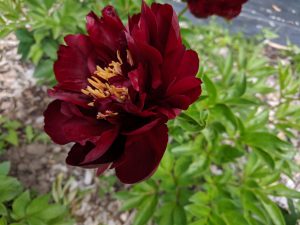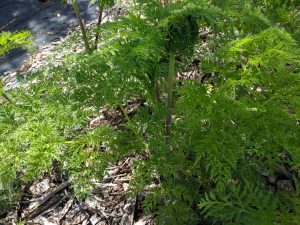 As two customers left last week one said to the other, “oh, this is an education.” YES gardening is an education. We don’t just grow a pretty garden. Gardeners discover bees, bugs, butterflies, birds, soil type, ecology, ebb and flow of seasons, in short, nature and nurture. At Heritage Flower Farm we tell you this and more – where plants come from, a world exploration; when gardeners grew them; how native folks used them; and sometimes who discovered or grew them. It’s a circle of discovery from long ago to today.
As two customers left last week one said to the other, “oh, this is an education.” YES gardening is an education. We don’t just grow a pretty garden. Gardeners discover bees, bugs, butterflies, birds, soil type, ecology, ebb and flow of seasons, in short, nature and nurture. At Heritage Flower Farm we tell you this and more – where plants come from, a world exploration; when gardeners grew them; how native folks used them; and sometimes who discovered or grew them. It’s a circle of discovery from long ago to today.
A few ways to discover.
1st observe. Watch and observe especially over time as things change. With birds that can be short, during migration. With trees it can mean years.
Experiment. Go new places – botanic gardens, arboreta, garden walks, and nature centers. Try plants in new places in the garden or plants you’ve not grown before. Then observe. Even failed experiments teach something. If there was one way to build a garden all gardens would look the same.
Subscribe to blogs. My favorites are Garden Myths https://www.gardenmyths.com/ , The Gardens Trust Weekly Digest https://thegardenstrust.blog/ and A Way to  Garden. https://awaytogarden.com . Read garden magazines and books. Winter’s for reading.
Garden. https://awaytogarden.com . Read garden magazines and books. Winter’s for reading.
Google, ask people, join a garden club, or join a garden group on line. The list is endless. There’s more but there’s only 24 hours a day and it’s more fun to be outside in the garden. The point is exercise your curiosity, try things and find that ah ha moment.
The picture on top is Peony ‘Buckeye Belle.’ We planted it last fall & hope to have some to sell in a few years. The next is the foliage of Selinum wallichianum Wallich’s Milk parsley. References say it’s only hardy to Zone 6. We planted it last summer and, covered with leaves; it survived our verybadextremelycold Zone 4 winter. We’re considered Zone 5 but got -50˚ for two nights. Experiment success.
